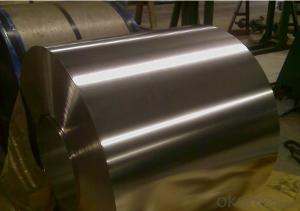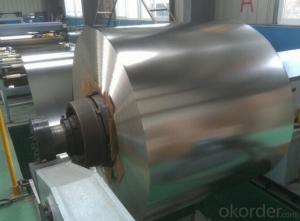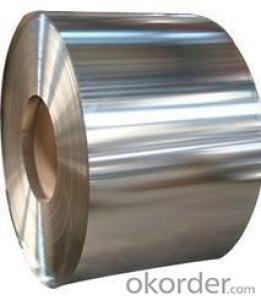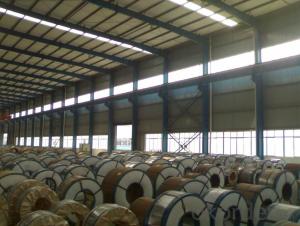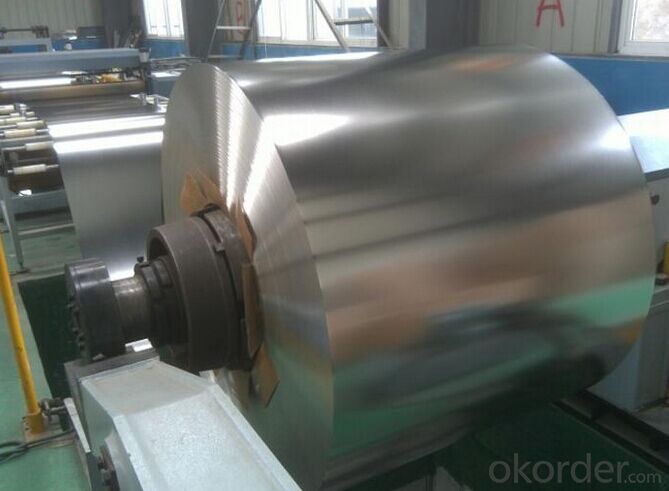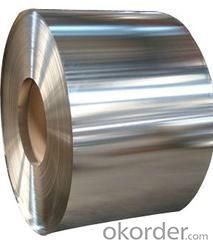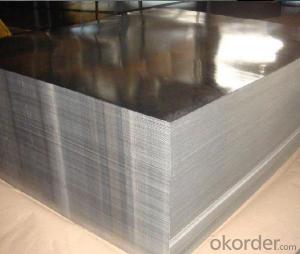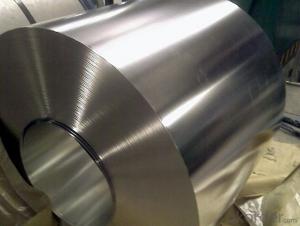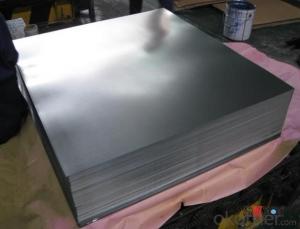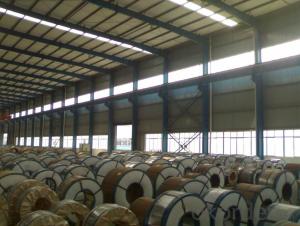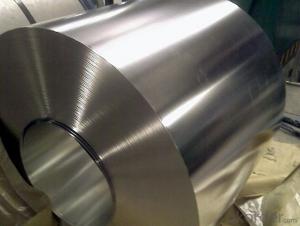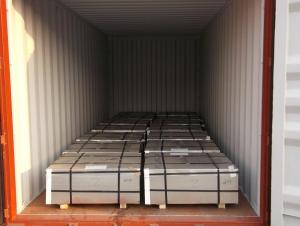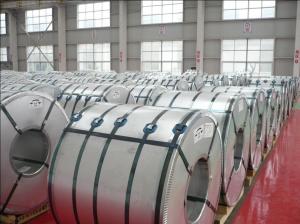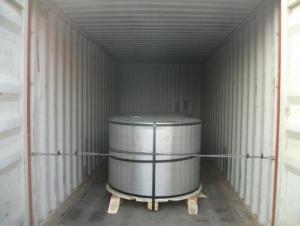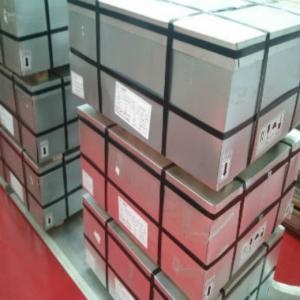Electrolytic Tinplate Coil / Sheet for Foods Packaging
- Loading Port:
- Tianjin
- Payment Terms:
- TT OR LC
- Min Order Qty:
- 25 m.t
- Supply Capability:
- 7000 m.t/month
OKorder Service Pledge
OKorder Financial Service
You Might Also Like
1.Structure of Electrolytic Tin Plate Coils and Sheets for Foods Metal Packaging Description
Electrolytic Tin Plate Coils and Sheets for Foods Metal Packaging, is one thin steel sheet with a coating of tin applied by electrolytic deposition. Tinplate made by this process is essentially a sandwich in which the central core is strip steel. This core is cleaned in a pickling solution and then fed through tanks containing electrolyte, where tin is deposited on both sides. As the strip passes between high-frequency electric induction coils, it is heated so that the tin coating melts and flows to form a lustrous coat.
2.Main Features of the Electrolytic Tin Plate Coils and Sheets for Foods Metal Packaging
Appearance – Electrolytic Tin Plate is characterized by its beautiful metallic luster. Products with various kinds of surface roughness are produced by selecting the surface finish of the substrate steel sheet.
Paintability and printability – Electrolytic Tin Plates have excellent paintability and printability. Printing is beautifully finished using various lacquers and inks.
Formability and strength – Electrolytic Tin Plates have got very good formability and strength. By selecting a proper temper grade, appropriate formability is obtained for different applications as well as the required strength after forming.
Corrosion resistance – Tinplate has got good corrosion resistance. By selecting a proper coating weight, appropriate corrosion resistance is obtained against container contents. Coated items should meet 24 hour 5 % salt spray requirement.
Solderability and weldability – Electrolytic Tin Plates can be joined both by soldering or welding. These properties of tinplate are used for making various types of cans.
Hygienic – Tin coating provides good and non toxic barrier properties to protect food products from impurities, bacteria, moisture, light and odours.
Safe – Tinplate being low weight and high strength makes food cans easy to ship and transport.
Eco friendly – Tinplate offers 100 % recyclability.
Tin is not good for low temperature applications since it changes structure and loses adhesion when exposed to temperatures below – 40 deg C.
3.Electrolytic Tin Plate Coils and Sheets for Foods Metal Packaging Images
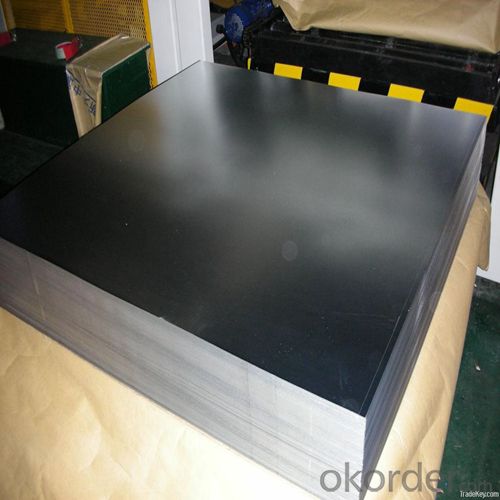


4.Electrolytic Tin Plate Coils and Sheets for Foods Metal Packaging Specification
Standard | ISO 11949 -1995, GB/T2520-2000,JIS G3303,ASTM A623, BS EN 10202
|
Material | MR,SPCC |
Thickness | 0.15mm - 0.50mm |
Width | 600mm -1150mm |
Temper | T1-T5 |
Annealing | BA & CA |
Coil Inner Diameter | 508mm |
Weight | 6-10 tons/coil 1~1.7 tons/sheets bundle |
Passivation | 311 |
Oil | DOS |
Surface | Finish,bright,stone,matte,silver |
5.FAQ of Electrolytic Tin Plate Coils and Sheets for Foods Metal Packaging
- How are the Electrolytic Tin Plates specified?
The Electrolytic Tin Plates are specified as per the steel base, extent of tempering, the coating weight, annealing method and the surface finish.
- How many types there are for base steels?
The base steels are of three types: Type MR, L, D
-What your tinplate material is used for ?
Tinplate is widely used for the packaging of products. Such as food cans,
beverage cans, pet cans, closures, general line cans and so on.
Printed Tinplate is offered!!
-How to place .an order or contact you ?
Please send us Email. we will give you a quick response in seconds .
- How is your quality ?
All our quality is prime even the secondary quality . We have many years experience
In this field with serious quality control standard . Advanced equipment, We welcome your visit to our factory .
- Q: Can tinplate be used for packaging personal hygiene products?
- Yes, tinplate can be used for packaging personal hygiene products. Tinplate is a popular choice for packaging due to its durability, resistance to corrosion, and ability to preserve the quality and freshness of products. Additionally, tinplate can be easily decorated, making it suitable for branding and marketing purposes.
- Q: What are the different types of tinplate edge finishes?
- There are primarily three types of tinplate edge finishes: open top, tight top, and double tight top.
- Q: Can tinplate be used for jewelry and accessories?
- Yes, tinplate can be used for jewelry and accessories. Tinplate is a durable material that can be easily shaped and adorned, making it suitable for creating various types of jewelry and accessories such as earrings, pendants, brooches, and decorative components. Additionally, tinplate can be coated or painted to enhance its appearance and protect it from tarnishing, making it a versatile choice for creating unique and stylish pieces.
- Q: How is tinplate coated for corrosion resistance?
- Tinplate is coated for corrosion resistance through a process called electrolytic tinning. This involves immersing the tinplate in a bath containing a tin salt solution and passing an electric current through it. The electric current causes tin ions to bond with the surface of the tinplate, forming a thin layer of tin that acts as a protective barrier against corrosion.
- Q: What are the main factors affecting tinplate coil surface quality?
- The main factors affecting tinplate coil surface quality include the quality of the base metal used, the cleanliness of the production environment, the effectiveness of the cleaning and coating processes, the temperature and speed of the production line, and the skill and experience of the operators.
- Q: What are the different ways to label tinplate closures?
- There are several different ways to label tinplate closures, including direct printing, pressure-sensitive labels, shrink sleeves, and embossing. Each method offers unique benefits and can be chosen based on the desired aesthetic, durability, and cost-effectiveness for the specific closure application.
- Q: How does tinplate contribute to the overall reusability of packaging?
- Tinplate contributes to the overall reusability of packaging by being a highly durable and long-lasting material. Its resistance to corrosion and impact makes it suitable for repeated use, reducing the need for frequent replacement. Additionally, tinplate can be easily cleaned and sterilized, ensuring the safety and hygiene of the packaged goods. This reusability aspect of tinplate packaging helps to minimize waste and promote sustainable practices in the packaging industry.
- Q: How is tinplate coated with food-grade materials?
- Tinplate is coated with food-grade materials through a process called electrolytic tinning. In this process, a thin layer of tin is electroplated onto the surface of the tinplate, creating a protective barrier between the metal and the food. This coating ensures that the tinplate is safe for food contact and prevents any undesirable reactions between the metal and the food.
- Q: How is tinplate affected by exposure to UV light?
- Tinplate is not significantly affected by exposure to UV light since it is a highly durable material with good resistance to sunlight.
- Q: How does tinplate packaging contribute to product protection against oxidation?
- Tinplate packaging contributes to product protection against oxidation by providing a barrier between the product and the surrounding environment. Tinplate is made by coating thin sheets of steel with a layer of tin, which acts as a protective barrier against moisture, air, and other external elements that can cause oxidation. This barrier prevents the entry of oxygen, which is necessary for oxidation to occur, thereby extending the shelf life of the product and maintaining its quality and freshness.
Send your message to us
Electrolytic Tinplate Coil / Sheet for Foods Packaging
- Loading Port:
- Tianjin
- Payment Terms:
- TT OR LC
- Min Order Qty:
- 25 m.t
- Supply Capability:
- 7000 m.t/month
OKorder Service Pledge
OKorder Financial Service
Similar products
Hot products
Hot Searches
Related keywords
